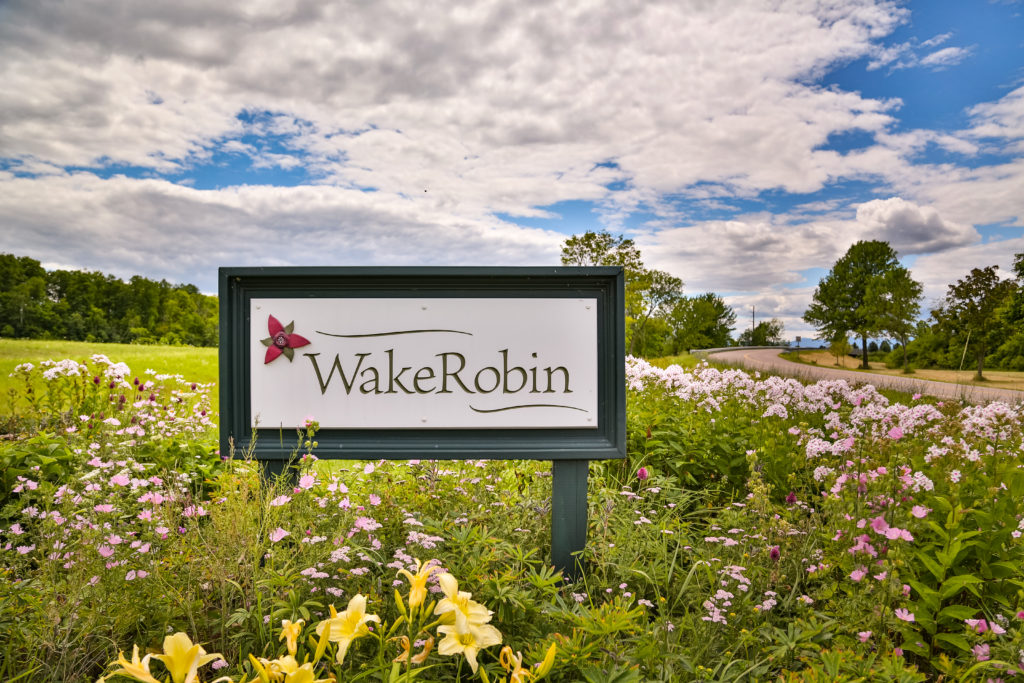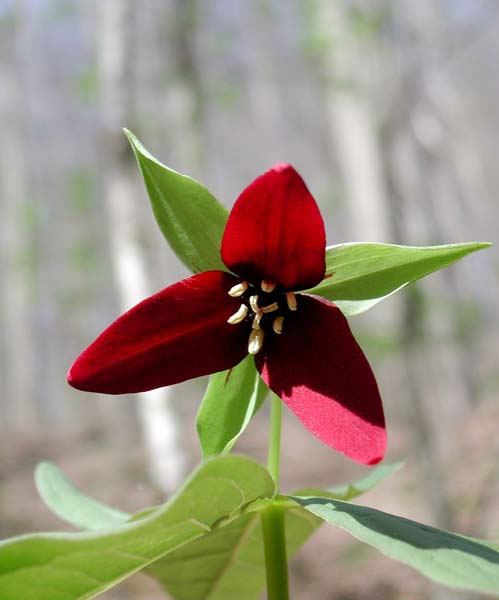Before Wake Robin became Wake Robin, it was just an idea of two visionaries.
They may not have known it in 1983, but Wake Robin founders Stokes and Mary Jane Gentry began planting seeds that, years later, would blossom into Vermont’s only nonprofit Life Plan Community.
The story goes like this. Stokes and Mary Jane were returning from their 30th reunion weekend at Swarthmore College in Pennsylvania. During their stay, they visited nearby CCRCs that were guided by Quaker principles. The Gentrys were deeply impressed, and they both agreed that it would be “wonderful to have something like this in Vermont!” So began the challenging journey toward Wake Robin.

Entrance sign to the community
Back in Vermont, Stokes and Mary Jane gathered like-minded people to form the Founding Committee. The group of 32 people began conducting research, exploring the different models of CCRCs, and sending out surveys to gauge interest.
The Committee’s hard work paid off. They generated the Founding Principles which still shape Wake Robin today. Perhaps no more important was the first principle: “Belief in the dignity, independence, and worth of each individual.”
By 1985, the Committee received 501(c)(3) non-profit corporation status from the IRS. A series of important tasks lay ahead. But before they could get ahead of themselves, they had to name the nascent community.
From the recent publication, What’s Next? The Continuing Journey of the Wake Robin Life Care Community, by Lynn Bond and Jacqueline Weinstock, the origin story is chronicled as thus: “the Founding Committee devoted great care and much thought to naming their new nonprofit corporation.” The founding members connected strongly to nature and environmental values, and so they wanted to have a place-based name that correlated to the experience of the Vermont landscape.
Why the name Wake Robin?
The founders foreshadowed the emphasis we have on active aging today. For, in keeping with a naturalist approach, they selected “Wake Robin” as the community’s name. A red variety of the trillium plant, Wake Robin are among the first wildflowers that blanket the forest floor in spring. The founders were not interested in making this a retirement community, but rather, like the trillium plant itself, as a community of new growth.

The Wake Robin trillium, first sign of spring!
Wake Robin founding member Cathy Yandell, explained the name choice this way: “[We] felt that the bond between people and plants was indeed a strong one – that the carpets of trillium, white and red, together with the name Wake Robin could carry the message of spring throughout the year.”
So even as we approach the winter months, among residents there remains a strong conviction in growth and renewal. It is the essential Wake Robin way.

